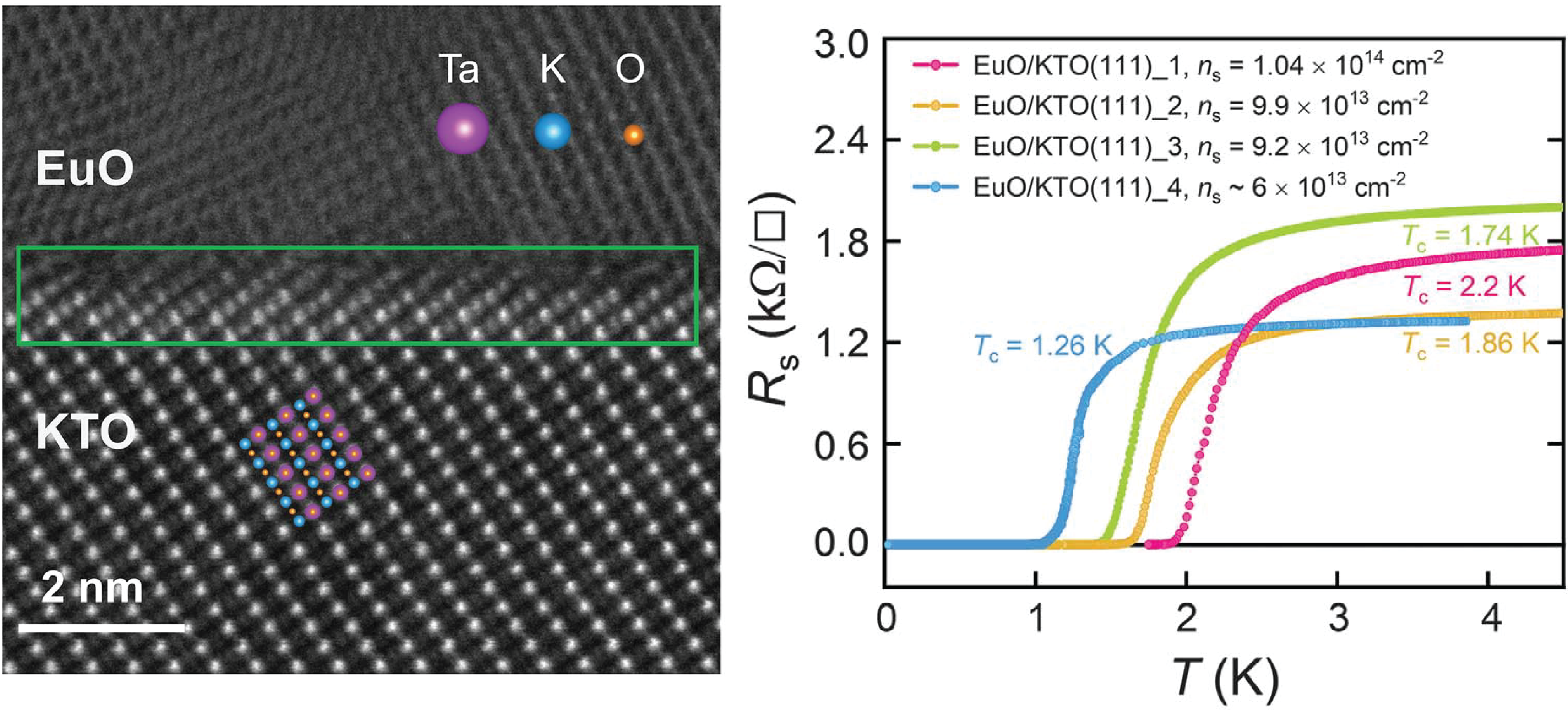Overview
We are widely interested in quantum materials and devices in both equilibrium and nonequilibrium regimes.
Quantum materials: We are particularly interested in strongly correlated quantum liquid and solid systems, such as superfluid helium, solid hydrogen, topological superconductors, quantum Hall liquids, and quantum spin liquids.
Quantum devices: We are particularly interested in highly integrated quantum electronic and photonic systems, such as single-electron transistors, single-ion transducers, single-photon detectors, and superconductor/semiconductor qubits.
Quantum information processing with single electron on solid neon

We recently realized a fundamentally new solid-state qubit platform by trapping and manipulating an isolated single electron on an ultrapure solid neon surface in a vacuum. The charge (motional) states of the electron are coherently controlled and readout by microwave photons in an on-chip superconducting resonator. The observed relaxation and coherence times have both reached the order of 0.1 millisecond. The measured single-qubit gate fidelity and single-shot readout fidelity have reached 99.97% and 98.1% respectively. These results manifest that our discovered electron-on-solid-neon (eNe) qubits have outperformed all the traditional semiconductor/superconductor charge qubits and rivaled state-of-the-art superconducting Josephson-junction qubits. The superior performance of eNe qubits is attributed to the chemical inertness of Ne – the second lightest noble element in nature. In a low-temperature and near-vacuum environment, Ne spontaneously condenses into an ultrapure quantum solid, devoid of any two-level fluctuators, quasiparticles, or dangling bonds. Its small atomic polarizability and minute spinful isotope make it akin to an artificial vacuum with ultralow charge and spin noise. Besides our experimentally realized eNe charge qubits, our theoretically calculated eNe spin qubits in isotopically purified solid Ne can have a coherence time exceeding 10s. Therefore, the eNe qubit platform has shown great promise to be developed into an ideal quantum information architecture.
Space-time crystalline order in a Floquet-driven high-Tc superconductor

We recently predicted that the high-critical-temperature (high-Tc) superconductor Bi2Sr2Can-1CunO2n+4+x (BSCCO) is a natural candidate for the envisioned classical space-time crystal (STC). While there has been considerable discussion about what is truly outstanding in STC, at present, it is mostly agreed that the STC refers to a nonequilibrium phase of matter displaying long-range order in both space and time. Specifically, the (nonlinear) many-body interaction makes the system exhibit long-lived oscillations at a period longer than the period of the driving source, and the oscillation patterns show rigidity against perturbation from the environment. BSCCO intrinsically forms a stack of Josephson junctions. Under a periodic parametric modulation of the Josephson critical current density, the Josephson currents develop coupled space-time crystalline order, breaking the continuous translational symmetry in both space and time. The modulation frequency and amplitude span a (nonequilibrium) phase diagram for a so-defined spatiotemporal order parameter, which displays rigid pattern formation within a particular region of the phase diagram. Based on our calculations using representative material properties, we propose a laser-modulation experiment to realize the predicted space-time crystalline behavior. Our findings bring new insight into the nature of space-time crystals and, more generally, into nonequilibrium-driven condensed matter systems.
Anisotropic 2D superconductivity at metal-oxide interfaces

Collaborating with Dr. Anand Bhattacharya’s team at Argonne National Laboratory, we recently discovered an exotic superconductivity in the electron gases formed at interfaces between (111)-oriented KTaO3 and insulating overlayers of either EuO or LaAlO3. The superconducting transition temperature, as high as 2.2K, is about one order of magnitude higher than that of the LaAlO3/SrTiO3 system. Notably, similar electron gases at KTaO3 (001) interfaces remain normal down to 25mK. The critical field and current-voltage measurements indicate that the superconductivity is two-dimensional. In EuO/KTaO3 (111) samples, a spontaneous in-plane transport anisotropy is observed before the onset of superconductivity, suggesting the emergence of a distinct stripe-like phase, which is also revealed near the critical field.
Dark matter detection with superfluid helium and solid neon

Collaborating with the HeRALD (Helium Roton Apparatus for Light Dark Matter) project led by Lawrence Berkeley National Laboratory, we recently developed a long-working-distance laser-scanning microscopy at below 100mK temperature. It can be used to measure the quasiparticle diffusion in superconducting aluminum fins surrounding a transition-edge sensor (TES) merged in a superfluid helium (He). A TES can sense potentially low-mass dark-matter-induced quasiparticle excitations in superfluid He in the meV energy scale. We also plan to use solid neon for general beyond-the-standard-model (BSM) particle/symmetry detection. Taking dark matter as an example, liquid xenon (Xe) has been used in heavy-mass dark-matter detection and superfluid helium (He) has been used in lower-mass dark-matter detection. Neon sits in between these two regimes and is particularly attractive in that it does not contain long-lived radioactive isotopes as argon (Ar) and krypton (Kr) do, and so can provide a much cleaner scintillation background.